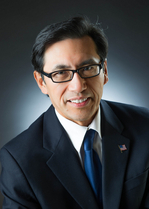For portals, speak patients' language

Serving a multi-ethnic patient population that speaks six different languages – with five different alphabets! – is just one of the Stage 2 meaningful use challenges for New York Hospital Queens.
[See also: Patient portal mandate triggers anxiety]
It's a tall order for many providers to meet MU's 5 percent threshold for patient access, even when they're located in English-speaking communities with a relatively high level of tech-savviness.
But for an urban community with many immigrants -- who also speak Spanish, Chinese, Korean, Russian and Greek -- the hurdles can be just that much higher, especially when most patient portals are accessible in English only.
[See also: Portals give hospitals an edge]
Add to this the fact that most personal health record apps require an email address to create an account, and the prospective pool of people who could compose that 5 percent of patients gets winnowed down even further.
Still, the hospital is moving forward this summer with a "full court press" on patient engagement and fully expects to attain that oft-elusive access goal: ensuring that 5 percent of patients discharged between July 1 and September 30 access their medical records online.
"That 5 percent figure doesn't sound like a large number," says Camela Morrissey, vice president, public affairs and marketing, and chief marketing officer at New York Hospital Queens. "But for us, when you do the math, with our discharges in that period of time, it's probably between 450 and 500 patients."
The challenges of getting that many different people to log on to a patient portal are numerous.
 "It starts with patients having to give us their email so we can send a validation email and they can verify they are who they say they are," said Kenneth Ong, MD, chief medical informatics officer, New York Hospital Queens.
"It starts with patients having to give us their email so we can send a validation email and they can verify they are who they say they are," said Kenneth Ong, MD, chief medical informatics officer, New York Hospital Queens.
Given that not everyone has an email address, "We've had to engage help desk resources devoted entirely to the patient portal, in order support patients – which of course is an extra effort and extra cost on our part," says Ong.
That's not the only thing that's necessitated changes to the way the hospital does its daily work.
"The portal is in English, and our patient population speaks a number of different languages," says Morrissey. "We have to be able to deliver patient information in six languages. Being able to bridge that is a big challenge in the workflow, because we actually have to bring in some translation services."
It also, not insignificantly, "narrows the pool of patients who are most likely to find this relevant and accessible in its current form," she adds.
All that means New York Hospital Queens has had to have an all-hands-on-deck strategy to getting as many patients on board with the engagement initiative as possible.
"It's really requiring a very full-circle approach on our part," says Morrissey. "We've got everybody from Ken's group in informatics, to IT, to marketing and public affairs handling the communication, to our registration and admissions people, to our health information management people, to our volunteers and our patient advocates."
The hospital is "putting on a full court press," she says, "increasing the encouragement to provide a valid email address at registration. That's had the effect of increasing the number of email addresses that we collect."
After all, she says, "our patient population, like probably most, has concerns: 'If I give you my email address, are you going to spam me? Are you going to chase me for a bill?' Our folks who have been collecting that information up front have been educated and have a chance address those concerns."























